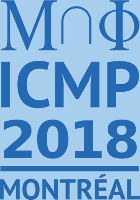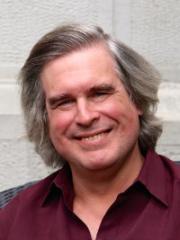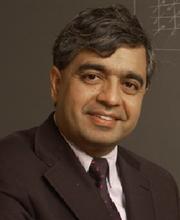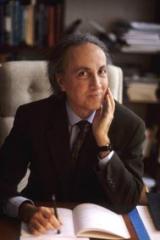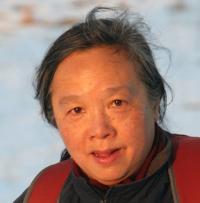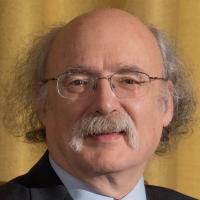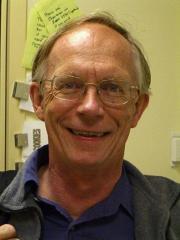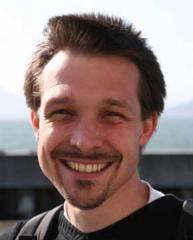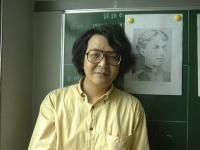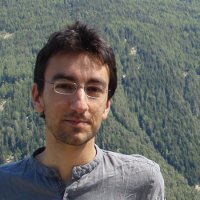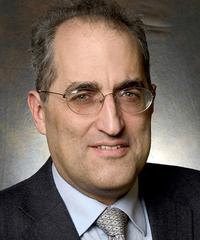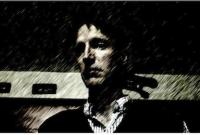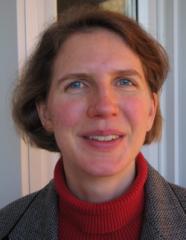Plenary Talks
- Monday, Jul 23 [symposia auditorium]
- 11:00 Gilles Brassard (Université de Montréal), All no-signalling theories are local-realistic
- 14:00 Subir Sachdev (Harvard University), Solvable models of quantum matter without quasiparticles
- Tuesday, Jul 24 [symposia auditorium]
- 09:00 Thibault Damour (Institut des Hautes Études Scientifiques), Gravitational Waves and Binary Black Holes
- 10:30 Lai-Sang Young (New York University), Comparing chaotic and random dynamical systems
- Wednesday, Jul 25 [symposia auditorium]
- 09:00 F. Duncan M. Haldane (Princeton University), Flux attachment and non-commutative geometry in the fractional quantum Hall effect: some open mathematical problems
- 10:30 Anne-Laure Dalibard (Université Pierre et Marie Curie), Recent advances in fluid boundary layer theory
- 11:30 Alessandro Giuliani (Università di Roma Tre), Universal fluctuations in interacting dimers
- Thursday, Jul 26 [symposia auditorium]
- 09:00 John Cardy (University of California), The $T\overline T$ deformation of quantum field theory
- 10:30 Slava Rychkov (The Institut des Hautes Études Scientifiques), Conformal Field Theory and Critical Phenomena in $d=3$
- 11:30 Rupert Frank (LMH Műnich), From the liquid drop model for nuclei to the ionization conjecture for atoms
- Friday, Jul 27 [symposia auditorium]
- 09:00 Masatoshi Noumi (Kobe University), Elliptic hypergeometric functions and elliptic difference Painlevé equation
- 10:30 Jean-Christophe Mourrat (École Normale Supérieure Paris), Quantitative stochastic homogenization
- 11:30 Fabio Toninelli (Université Claude Bernard Lyon 1), (2+1)-dimensional Stochastic Interface Dynamics
- Saturday, Jul 28 [symposia auditorium]
- 09:00 Edward Witten (Institute for Advanced Study), Open and Closed Topological Strings In Two Dimensions
- 10:30 Richard Kenyon (Brown University), Analytic limit shapes for the 5 vertex model
- 11:30 Lisa Jeffrey (University of Toronto), Higgs bundles and the triple reduced product
- All no-signalling theories are local-realisticIt is generally believed that experimental violations of Bell's inequalities, especially the recent so-called loophole-free experiments, provide evidence that quantum theory cannot be both local and realistic. We demonstrate to the contrary that all reversible-dynamics no-signalling operational theories (including unitary quantum theory) can be given a local-realistic interpretation. Thus, we answer by the negative the 1935 question of Einstein, Podolsky and Rosen: Quantum-mechanical description of physical reality can\textbf{not} be considered complete (at least not the standard Copenhagen formulation). And moreover yes, it \textbf{can} be completed! However, we also demonstrate that the standard Everettian view, according to which the universal wavefunction is a complete representation of the universe, must be abandoned if locality is postulated as a metaphysical principle.
Joint work with Paul Raymond-Robichaud. Based on arXiv:1710.01380 and arXiv:1709.10016 [quant-ph].
- Solvable models of quantum matter without quasiparticles
I will describe mathematical aspects of the Sachdev-Ye-Kitaev (SYK) class of models of interacting fermions. The fermions can occupy any of $N$ quantum states ($N \rightarrow \infty$), and have random all-to-all $q$-fermion interaction terms in the Hamiltonian ($q \geq 4$ and even). The low energy excitations of these models cannot be expressed in a quasiparticle basis, but remarkably many aspects are exactly solvable. I will describe the computation of the low temperature free energy, and the many-body density of states at low energy. There is a non-vanishing entropy in the zero temperature limit. The density of states is determined by a path integral of a quantum gravity theory in two-dimensional anti-de Sitter space. Applications to `strange metal' states of correlated electron materials will be briefly mentioned.
- Gravitational Waves and Binary Black Holes
The recent discovery of several gravitational wave events by the two interferometers of the Laser Interferometer Gravitational-Wave Observatory (LIGO), and by the Virgo interferometer, has brought the first direct evidence for the existence of black holes, and has also been the first observation of gravitational waves in the wave-zone. The talk will review the theoretical developments on the motion and gravitational radiation of binary black holes that have been crucial in interpreting the LIGO-Virgo events as being emitted by the coalescence of two black holes.
- Comparing chaotic and random dynamical systemsIn this talk I will compare and contrast (deterministic) chaotic dynamical systems and their stochastic counterparts, i.e. when small random perturbations are added to such systems to model uncontrolled fluctuations. Three groups of results, some old and some new, will be discussed. The first has to do with how deterministic systems, when sufficiently chaotic, produce observations resembling those from genuinely random processes. The second compares the ergodic theories of chaotic systems and of random maps (as in stochastic flows of diffeomorphisms generated by SDEs). One will see that results on SRB measures, Lyapunov exponents, entropy, fractal dimension, etc. are all nicer in the random setting. I will finish by suggesting that to improve the applicability of existing theory of chaotic systems, a little bit of random noise can go a long way.
- Flux attachment and non-commutative geometry in the fractional quantum Hall effect: some open mathematical problems"Holomorphic states"play a key role in model many-body fractional quantum Hall states, such as the Laughlin states. The origin of holomorpic structure is usually (incorrectly) explained as being a special property of the "lowest Landau level", but in fact derives from the non-commutative geometry of guiding centers of Landau orbits in any Landau level. The complex structure defines a metric that describes the shape of "flux attachment", which is a hidden variational parameter of the Laughlin state. The Laughlin and other even-more-interesting model states such as the non-Abelian Moore-Read and Read-Rezayi states have rich mathematical structure (for example they are Jack polynomials on genus-0 manifolds) but so far most quantitative information has come from numerical studies. The are a number of challenging problems that mathematical physics could usefully tackle. For example, the Laughlin states are the highest density states in the kernel of a "pseudopotential model" with close analogies to the the AKLT spin chain. Numerical studies clearly show that its excitation gap remains finite in the thermodynamic limit, but while a lower bound to the gaps of the AKLT model was found, this is lacking for the model for which the Laughlin state is the ground state. Other issues such as a modular-invariant formalism on the torus, and a Heisenberg as opposed to Schrodinger formulation appropriate for non-commutatve geometry will be discussed, if time permits.
- Recent advances in fluid boundary layer theory
In the past few years, theoretical progress has been made in several directions in the understanding of fluid boundary layers: well-posedness and ill-posedness results for the time-dependent Prandtl equation and its variants, separation in time-dependent and stationary settings... In this talk, I will make a review of these results, and I will present some potential next steps.
- Universal fluctuations in interacting dimers
In the last few years, the methods of constructive Fermionic Renormalization Group have successfully been applied to the study of the scaling limit of several two-dimensional statistical mechanics models at the critical point, including: weakly non-planar 2D Ising models, Ashkin-Teller, 8-Vertex, and close-packed interacting dimer models.
In this talk, I will focus on the illustrative example of the interacting dimer model and review some of the universality results derived in this context. In particular, I will discuss a proof of the massless Gaussian free field (GFF) behavior of the height fluctuations. It turns out that GFF behavior is connected with a remarkable identity (`Haldane relation') between an amplitude and an anomalous critical exponent, characterizing the large distance behavior of the dimer-dimer correlations.
Based on joint works with V. Mastropietro and F. Toninelli.
- The $T\overline T$ deformation of quantum field theory
The $T\overline T$ deformation is a modification of local 2d QFT at short distances which is in some sense solvable. I argue that this is because it corresponds to coupling the theory to a random metric whose action is topological. Under the deformation, partition functions satisfy linear diffusion-type equations which describe a kind of Brownian motion in the moduli space of the world sheet manifold.
- From the liquid drop model for nuclei to the ionization conjecture for atoms
The liquid drop model is an isoperimetric problem with a competing non-local term. It was originally introduced in the nuclear physics literature in 1930 and has received a lot of attention recently as an interesting problem in the calculus of variations. We discuss some new results and open problems. We show how the insights from this problem allowed us to prove the ionization conjecture in a certain model for an atom in density functional theory.
- Elliptic hypergeometric functions and elliptic difference Painlevé equation
Elliptic hypergeometric functions are a new class of special functions that have been developed during these two decades. In this talk I will give an overview of various aspects of elliptic hypergeometric series and integrals with emphasis on connections with integrable systems including the elliptic difference Painlevé equation.
- Quantitative stochastic homogenization
Over large scales, many disordered systems behave similarly to an equivalent "homogenized" system of simpler nature. A fundamental example of this phenomenon is that of reversible diffusion operators with random coefficients. The homogenization of these operators has been well-known since the late 70's. I will present recent results that go much beyond this qualitative statement, reaching optimal rates of convergence and a precise description of the next-order fluctuations. The approach is based on a rigorous renormalization argument and the idea of linearizing around the homogenized limit.
- (2+1)-dimensional Stochastic Interface Dynamics
The goal of this talk is to discuss large-scale dynamical behavior of discrete interfaces. These stochastic processes model diverse statistical physics phenomena, such as interface growth by random deposition or the motion, due to thermal fluctuations, of the boundary between coexisting thermodynamic phases. While most known rigorous results concern (1+1)-dimensional models, I will present some recent ones in dimension (2+1). On the basis of a few concrete models, I will discuss both: (1) two-dimensional interface growth and the so-called Anisotropic KPZ universality class; and (2) reversible interface dynamics and the emergence of hydrodynamic limits, in the form of non-linear parabolic PDEs.
- Open and Closed Topological Strings In Two Dimensions
Several decades ago, three parallel theories of two-dimensional quantum gravity were developed, involving random matrices; Liouville theory coupled to matter; and topological field theory. The first two approaches have fairly straightforward extensions to the case of quantum gravity on a two-manifold with boundary, but the third does not. However, an extension of the third approach was discovered relatively recently by Pandharipande, Solomon, and Tessler, with later work by Buryak and Tessler. In this talk (based on work with R. Dijkgraaf), I will explain their construction in a more physical language.
- Analytic limit shapes for the 5 vertex model
This is joint work with Jan de Gier and Sam Watson. The Bethe Ansatz is a very old technique but using some new tools inspired by conformal invariance we can make progress on both the limit shape phenomenon and fluctuations for models beyond free fermionic models. In particular using the Bethe Ansatz we find an explicit expression for the free energy of the five vertex model. The resulting Euler-Lagrange equation can be reduced to an equation generalizing the complex Burgers' equation. We show how to solve this equation, giving analytic parameterizations for limit shapes.
- Higgs bundles and the triple reduced product
(Joint work with Jacques Hurtubise, Steven Rayan, Paul Selick and Jonathan Weitsman)
We identify the symplectic quotient of the product of three orbits in SU(3) with a space of Higgs bundles over the 2-sphere with three marked points,, where the residues of the Higgs fields at the marked points are constrained to lie in the three coadjoint orbits. By considering the spectral curves for the Hitchin system, we identify the moment map for a Hamiltonian circle action on the symplectic quotient. We use the earlier work of Adams, Harnad and Hurtubise to find Darboux coordinates.
